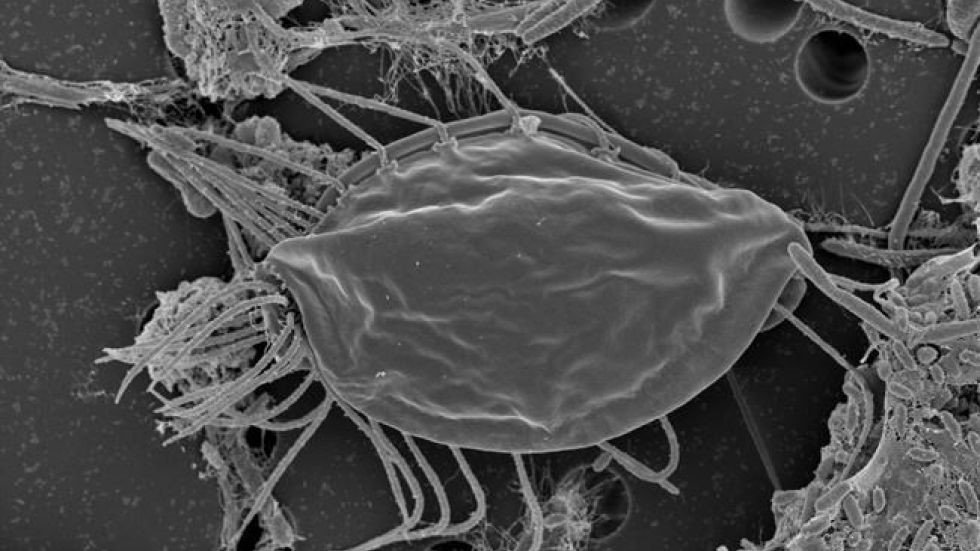Pistachio nut
The soil samples, which had been collected along a hiking trail, were immersed in water and studied under a microscope by the scientists over the course of a month. One day, Yana Eglit, a PhD student at Dalhousie, noticed two bizarre microbial predators emerging from the soil. Using a dozen hair-like flagella to move around, these single-celled organisms, no more than two-hundredths of a millimetre across, look ‘kind of like a pistachio nut with little hairs coming from between the shells’, says Eglit.
Man-eating ogre
To unravel precisely what they were looking at, the team examined the microbes' genetic material. After analysing hundreds of genes, it was evident that the single-celled creatures are not part of any known biological kingdom and represent a unique and entirely new branch on our planet's tree of life. The scientists named this new branch Hemimastigophora. According to Alastair Simpson, a biology professor at Dalhousie, ‘In an evolutionary sense, these organisms constitute a group that is more different from everything we know about than animals are from fungi’. Departing from the tradition of assigning species Greek or Latin names, the researchers chose to honour the spot where the microbe was found, in the traditional territory of the Mi’kmaq people in Nova Scotia. They have named the new species Hemimastix kukwesjijk – Kukwes being a hairy man-eating ogre in Mi’kmaq folklore.
Missing pieces
The discovery of the Hemimastigophora has uncovered a crucial clue to how animals, plants and fungi evolved as complex cells over the past two billion years. However, we still lack many pieces of this puzzle. ‘Having realised now that we've been missing one of these major groups all this time, I expect it to realign quite a bit of research in trying to understand how complex cells evolved’, Simpson explains. It will also shed new light on the earth's ecology. ‘Microbes in general are hugely important in the earth's ecosystem. The way it is, is to a large extent because of microbes and the activities they perform.’ Now that hemimastigotes can be detected in genetic samples collected in the wild, scientists can gain a better picture of the ecosystem and how different microbes interact.
Bron:
Nature
Video:
Global News

